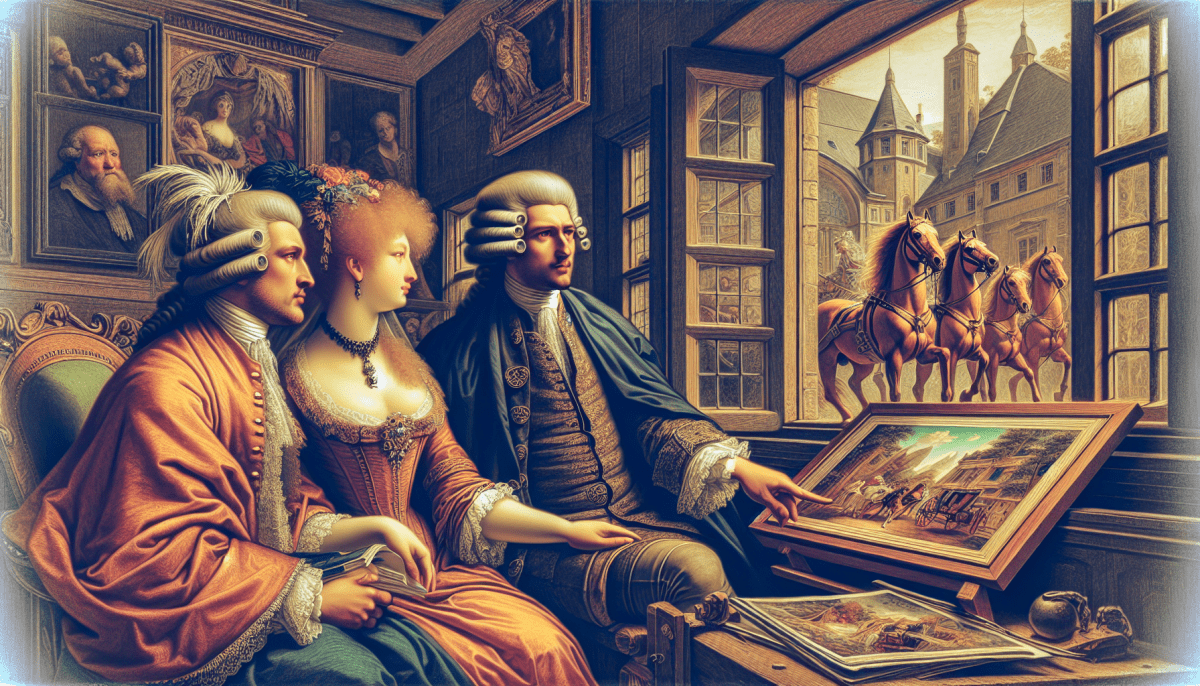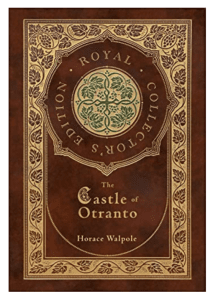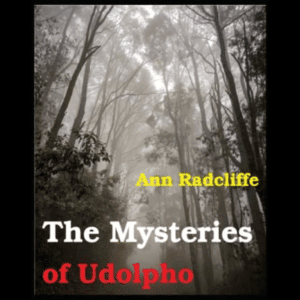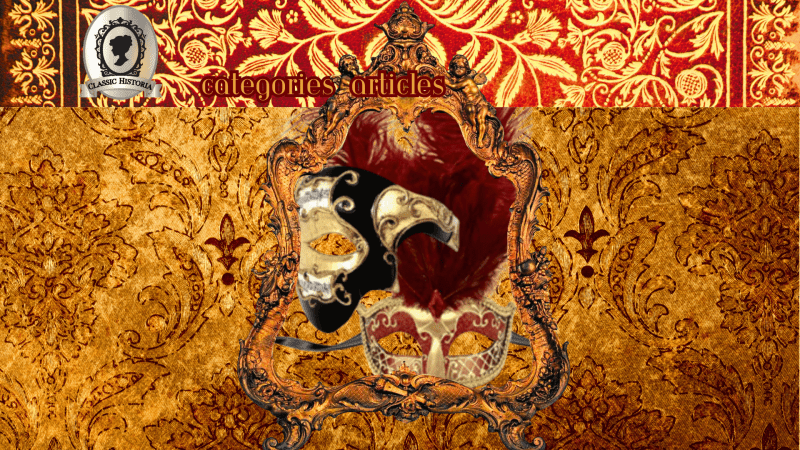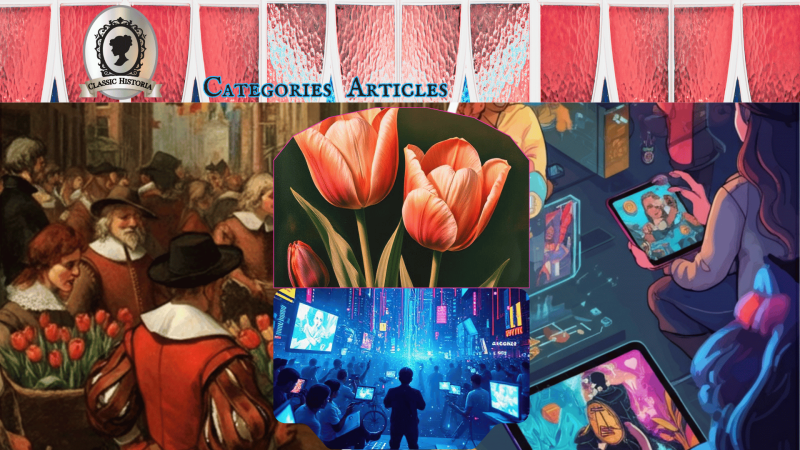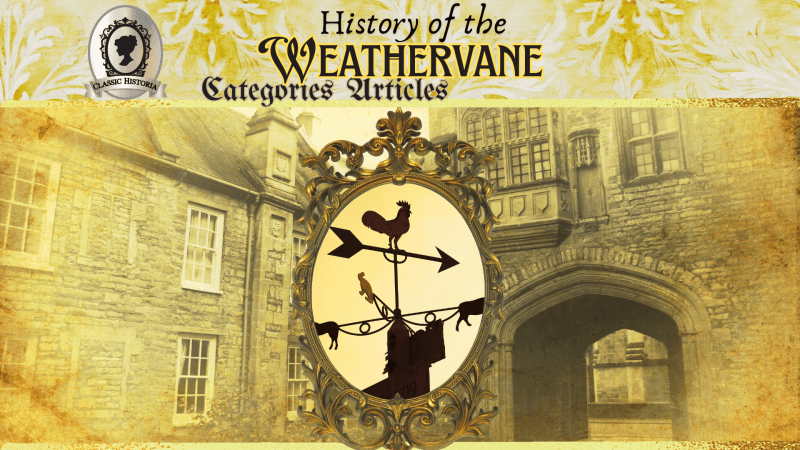Updated on [04/11/2025]
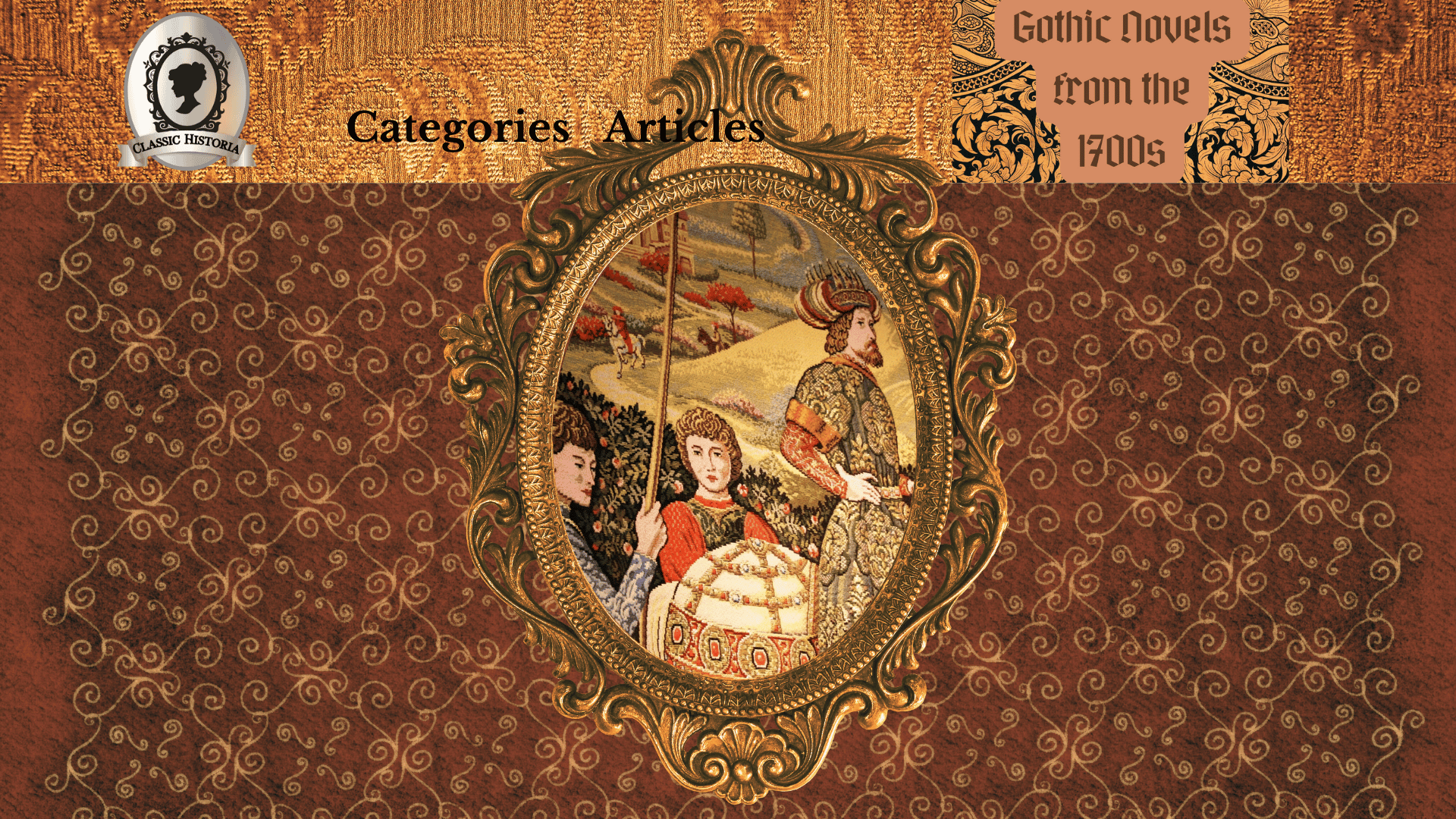
Classic Historia may receive a commission on purchases made through Amazon and eBay affiliate links at no additional cost to you.
The 18th century marked the birth of Gothic fiction, a genre that seamlessly blends elements of horror, romance, and the supernatural to create a unique and deeply atmospheric experience for readers. Set in eerie castles, ancient ruins, and windswept landscapes, Gothic novels captivated audiences with their gothic features of fear, mystery, and the darker aspects of human nature. These works often featured protagonists entangled in complex emotional struggles, while shadowy villains and elusive specters added to the suspense. The genre reflected the anxieties of its era, such as societal upheaval and the fascination with the unknown, while also paving the way for modern horror and dark fantasy, elements of gothic horror.
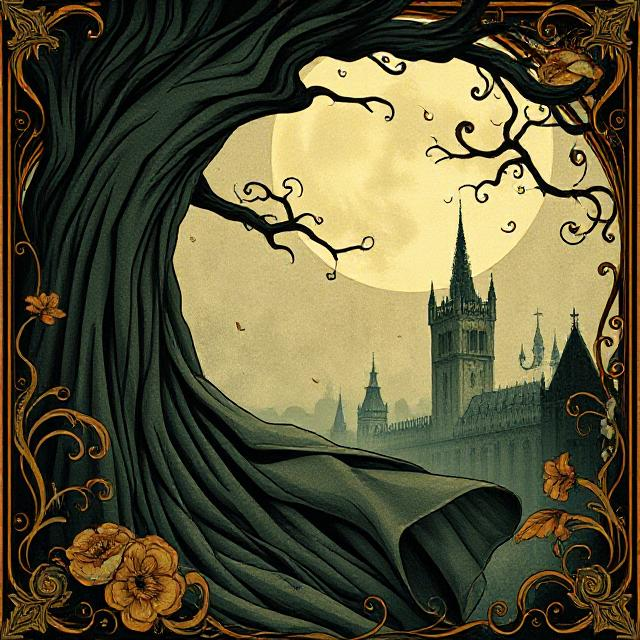
Here are some of the most iconic classic gothic literature from the 18th century:
- The Castle of Otranto (1764) by Horace Walpole – Widely regarded as the first Gothic novel, this tale of a haunted castle and an ancestral curse set the template for the genre.
- The Mysteries of Udolpho (1794) by Ann Radcliffe – Known for its vivid descriptions and compelling heroine, this novel introduced readers to the thrilling blend of terror and romance that became synonymous with Gothic fiction.
- The Monk (1796) by Matthew Gregory Lewis – A controversial and shocking work for its time, this novel is famous for its dark themes, sinister characters, and intricate plotting.
- Vathek (1786) by William Beckford – Blending elements of Gothic and Orientalism, this novel follows the story of an ambitious Caliph who descends into a world of dark magic and temptation.
- The Italian (1797) by Ann Radcliffe – Another masterpiece by Radcliffe, this novel explores themes of religious authority, love, and deception, set against a backdrop of mystery and suspense.
These novels continue to influence literature and popular culture, offering a fascinating glimpse into the imagination of the 18th century and the genre's enduring appeal.
"The Castle of Otranto" by Horace Walpole
Published in 1764, "The Castle of Otranto" is often considered the inception point of the Gothic genre. With its ancient castle setting, secret passages, and larger-than-life characters, the novel possesses all the signature marks of a Gothic tale. In essence, the story reflects on power, guilt, and the supernatural.
"The Castle of Otranto" tells the story of a noble family driven to desperation by the fatal and unexplainable death of their son and heir, Conrad. This loss triggers a series of events, including a forbidden love, cruel desires for power, and the awakening of a prophecy regarding the impending ruin of the Castle of Otranto.
The audaciousness of fate, the weight of injustices past, and the portrayal of otherworldly events are the key themes in the novel. The presence of the supernatural, such as the unexpected appearance of a gigantic armored hand, is seamlessly weaved into the narrative, complicating the lives and fears of the living.
$22.38
5 out of 5 starsThe Castle of Otranto - Royal Collector's Edition
Perfect for Literature Lovers and Collectors Alike, Indulge in the Royal Collector's Edition of The Castle of Otranto
Product information
Product Review Score
Product links
Horace Walpole: The Father of Gothic Literature
Horace Walpole (1717–1797) is widely regarded as the pioneer of Gothic literature, a genre that blends elements of horror, romance, and the supernatural to evoke a sense of mystery and awe. Born the youngest son of Sir Robert Walpole, Britain’s first prime minister, Horace was exposed to a world of refinement, politics, and literature from a young age. However, it was his creative imagination and passion for the arts that would leave a lasting legacy on the literary world.
Walpole's most significant contribution to literature came with his novel The Castle of Otranto (1764), heralded as the first Gothic novel. This groundbreaking work introduced hallmarks of the Gothic genre, including eerie settings, ancient prophecies, supernatural occurrences, and intense emotional conflicts. Key to Walpole's innovation was his ability to blend medieval romance with the emerging realism of 18th-century fiction, creating a unique narrative style that captivated readers.
Beyond his role as an author, Walpole was an architect, historian, and collector. His fascination with Gothic aesthetics extended to architecture, most notably in the neo-Gothic revival of his own estate, Strawberry Hill House. This grand residence, with its turrets, pointed arches, and intricate detailing, became a physical manifestation of his literary vision, inspiring not only his contemporaries but also subsequent generations of storytellers and architects.
Horace Walpole's influence on Gothic literature is immeasurable. He laid the groundwork for later writers such as Mary Shelley, Ann Radcliffe, and Edgar Allan Poe, who pushed the genre further into realms of psychological depth and dark romanticism. While The Castle of Otranto may have been his most famous work, Walpole's legacy lives on in the Gothic traditions that continue to fascinate readers and audiences around the world.
Legacy and Influence
Horace Walpole's work became a template that inspired generations of writers. Its mixture of medieval settings, romance, and Gothic horror elements contributed to the genre. Its initial skepticism and curiosity about the supernatural world laid the foundation for the lasting trope of the haunted castle in literature.
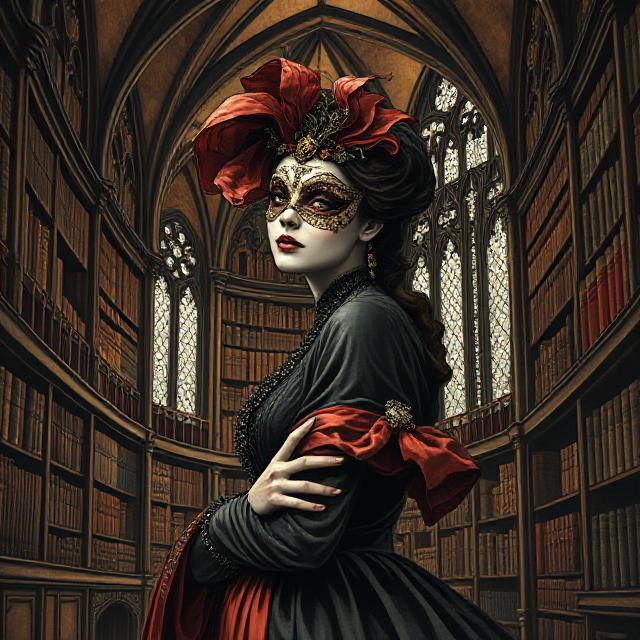
"The Mysteries of Udolpho" by Ann Radcliffe
Regarded as one of the most elaborate and successful Gothic works, "The Mysteries of Udolpho," published in 1794, is a masterful exploration of terror, beauty, and the power of the imagination. Ann Radcliffe's novel is known for its rich landscapes, mysterious narratives, and the delicate balance between rational explanations and supernatural occurrences.
The novel follows the fate of Emily St. Aubert, a young orphan living with her aunt, whose heart is entwined with the poetic and mysterious Valancourt. After a series of misfortunes and perilous encounters, Emily is taken to the foreboding and imposing Castle of Udolpho, where she uncovers dark secrets that threaten her sanity and her life.
Radcliffe's unparalleled gift for description paints vivid picture-perfect landscapes and Gothic settings. From the verdant hills of southern France to the decaying walls of the Castle of Udolpho, readers are transported to a world of haunting beauty and ominous magnificence.
Anne Radcliffe: The Pioneer of Gothic Fiction
Anne Radcliffe (1764–1823) is one of the most celebrated authors of the Romantic era, known for her profound contribution to Gothic fiction. Often referred to as "The Great Enchantress," Radcliffe's novels expertly blend elements of mystery, suspense, and supernatural intrigue, captivating readers and shaping the Gothic literary tradition. Her work has inspired countless writers and continues to leave a lasting legacy in literature.
Radcliffe's narratives are characterized by strong, virtuous heroines, intricate plots, and lush, atmospheric descriptions that transport readers into vividly imagined worlds. Her masterpieces, such as The Mysteries of Udolpho and The Italian, weave together themes of virtue, temptation, and the triumph of reason over fear, set against a backdrop of eerie castles, rugged landscapes, and shadowy figures. These elements, coupled with her ability to evoke both terror and awe, have earned her enduring critical acclaim.
$19.00
3.8 out of 5 starsThe Mysteries of Udolpho with Illustrations
A Timeless Classic with Stunning Illustrations for the Literary Enthusiast in Your Life
Product information
Product Review Score
Product links
One of Radcliffe's distinctive contributions to Gothic literature is her skillful use of the explained supernatural. While her novels initially hint at otherworldly forces, she often provides rational explanations for the mysterious events, balancing the tension between the natural and the supernatural. This narrative technique distinguishes her work and reflects the Enlightenment ideals of her time, where reason and logic prevail over superstition.
Despite her significant influence, Anne Radcliffe lived a relatively private life. She published her last novel, The Italian, in 1797 and retreated from the literary world soon after, leaving readers yearning for more of her gripping tales. Modern scholars speculate that her withdrawal was due, in part, to the pressures of fame and the shifting literary landscape of the early 19th century.
Anne Radcliffe's novels remain a cornerstone of Gothic fiction, celebrated for their rich storytelling, unforgettable settings, and profound exploration of human emotion. Through her timeless works, she created a blueprint for the Gothic genre and solidified her place as one of the most important figures in literary history.
The Psychological Terror
Beyond the physical perils Emily faces, Radcliffe's focus on the psychological implications of fear and the decay of the mind shapes a narrative that is as much about the inner struggle as it is about escape from external threats. This subtlety showcases Radcliffe's brilliance in blending elements of horror with layers of psychological complexity.
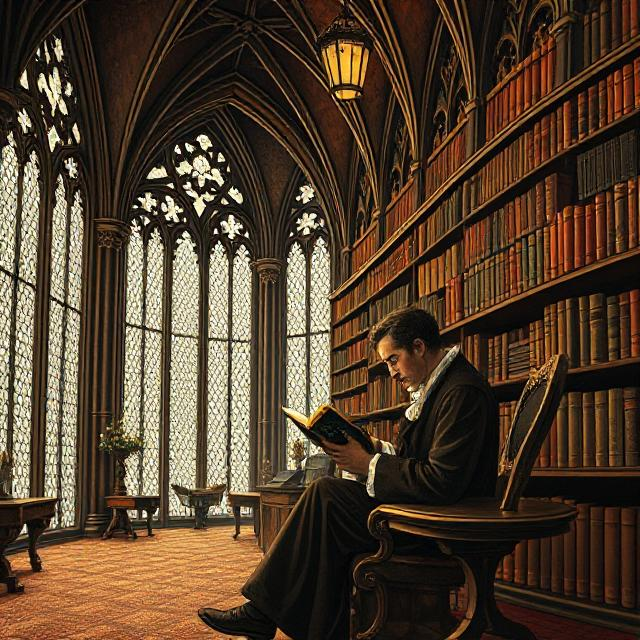
"The Monk" (1796) by Matthew Gregory Lewis
Matthew Gregory Lewis's The Monk stands as one of the most controversial and impactful Gothic novels of its era. Published in 1796, the novel shocked readers with its unrestrained exploration of dark themes, including seduction, corruption, and supernatural horror. Unlike the subtler, atmospheric tension found in Radcliffe's works, The Monk dives headfirst into explicit depictions of sin and moral decay, creating an unapologetically sinister world that both fascinated and horrified its audience. The central character, Ambrosio, a revered monk, serves as the story's antihero, whose descent into depravity and eventual demise underscores the novel's critique of hypocrisy and unchecked power within religious institutions. With its intricate plotting and vivid portrayal of evil, The Monk not only pushed the boundaries of Gothic fiction but also cemented its enduring legacy as a bold and provocative masterpiece.
Matthew Gregory Lewis, often referred to as "Monk" Lewis, was a prominent figure in the world of Gothic literature. Born on July 9, 1775, in London, England, Lewis displayed an early aptitude for storytelling and a keen interest in the arts. He received his education at Westminster School before continuing his studies at Christ Church, Oxford, where his exposure to European literature played a crucial role in shaping his distinctive literary style. During his youth, Lewis traveled extensively across Europe, immersing himself in the cultural and literary trends of the time, particularly the dark and emotive themes characteristic of Gothic fiction.
At the mere age of 20, Lewis wrote The Monk, his most famous and controversial work, which was published anonymously in 1796, late 18th century. The novel's sensational blend of horror, supernatural events, and moral corruption immediately captured public attention, propelling Lewis into literary fame. However, its explicit content and critique of religious institutions also sparked significant scandal, leading to debates about decency and censorship in literature. Despite the controversy, The Monk remains a seminal text in the Gothic canon, influencing countless writers and cementing Lewis's legacy as a daring and innovative author.
Beyond The Monk, Lewis made contributions to theater and poetry, though none saw the same level of acclaim. He wrote several plays, including The Castle Spectre and Alfonso, King of Castile, which showcased his flair for dramatic expression. His later life was marked by his interest in abolitionism and reforms for the treatment of enslaved people, partly influenced by his travels to his family’s estate in Jamaica. Tragically, Lewis's life was cut short when he died of yellow fever during a voyage home from the West Indies in 1818, at the age of 42.
Matthew Gregory Lewis's literary achievements, particularly his daring exploration of taboo subjects and his masterful use of Gothic tropes, continue to captivate readers and scholars. His work not only shaped the evolution of Gothic fiction but also reflected the anxieties and moral complexities of the late eighteenth century, securing his place as one of the most intriguing and influential figures in literary history.
$21.99
4.5 out of 5 starsMen's Vintage Pirate Steampunk Shirt for Costumes
Unleash Your Inner Adventurer with This Stylishly Pirate Shirt, Perfect for Costumes and Themed Events
Product information
Product Review Score
Product links
"Vathek" by William Beckford
Short and enigmatic, "Vathek" by William Beckford, published in 1786, takes readers on an exotic adventure suffused with Eastern mysticism and a descent into unrepentant desires. Beckford's Arabian tale steps away from the dreary European settings to present a story vibrant with color, sound, and treacherous, opulent lands.
The novel's eponymous character, Caliph Vathek, is a man obsessed with the pursuit of knowledge and satisfaction of all his carnal desires. His arrogance and ambition lead him to make a pact with Eblis, the prince of darkness, to build a tower that defies the natural laws, culminating in the Caliph's own spiritual and moral fall.
"Vathek" is remarkable for the strength and authenticity of its Arabian atmosphere, which was unusual for its time. The incorporation of Caliphs, genies, and Eastern mysticism, alongside a story of moral degradation, offers readers a refreshing contrast to the conventional Gothic trope.
William Beckford: The Eccentric Visionary Behind "Vathek"
William Beckford (1760–1844) was a multifaceted British author, art collector, and politician, best known for his Gothic novel Vathek. Hailing from a wealthy and influential family, Beckford lived a life marked by opulence, eccentricity, and controversy. His literary contributions, as well as his reputation as a connoisseur of art and architecture, have secured his place as a unique figure in history.
Beckford's privileged upbringing enabled him to pursue his interests across a variety of disciplines. Privately educated and widely traveled, he developed a fascination with Eastern culture, which he vividly explored in Vathek. Published in 1786, the novel remains his most celebrated work, combining Gothic elements with an Arabian Nights-inspired setting. Beckford’s deep knowledge of Islamic art, mythology, and lore infuses Vathek with a sense of authenticity and exoticism that captivated readers of his time and continues to do so today.
$147.99
4.9 out of 5 starsVintage-Inspired Porcelain Dinnerware Set for 4
Elevate Your Dining Experience with This Charming Porcelain Dinnerware Set
Product information
Product Review Score
Product links
Beyond literature, Beckford was a renowned art collector and aesthete. He amassed an extraordinary collection of paintings, rare books, and artifacts, many of which became famous in their own right. He also left a lasting mark on architecture with the construction of Fonthill Abbey, a sprawling and extravagant Gothic Revival mansion. Although the abbey famously collapsed due to poor construction, its ambitious design symbolized Beckford’s penchant for grandeur and creativity.
Not without controversy, Beckford's personal life contributed to his complex legacy. His lavish spending and unorthodox relationships led to social ostracism, and he withdrew from public life for long periods. Yet, his artistic pursuits flourished, and he remained devoted to exploring themes of beauty, decadence, and morality in his work.
William Beckford’s eccentric genius, combined with his passion for art, literature, and architecture, has left an indelible imprint on Gothic literature and cultural heritage. His life and work continue to be a subject of fascination, reflecting the tension between artistic brilliance and the excesses of his character.
Sensory Overload and Modern Resonance
Beckford's adeptness in conjuring sumptuously detailed and vivid scenes, coupled with his depiction of Vathek's hedonistic courtly life, provides a narrative that not only intrigues but also overwhelms the senses. Beckford crafts a story that echoes the dangers of unchecked power and the pursuit of pleasure, themes that continue to resonate in modern literature and social discourse.

"The Italian" By Ann Radcliffe
Ann Radcliffe’s The Italian (1797) is a quintessential example of Gothic fiction, showcasing her skillful blending of suspense, emotion, and vivid descriptions of both setting and character. The novel revolves around the forbidden romance between Ellena di Rosalba and Vivaldi, set against the backdrop of ominous natural landscapes and a sinister convent. A mysterious monk, Father Schedoni, plays a central role in the unfolding drama, embodying themes of secrecy, power, and guilt. Through its intricate plot and atmospheric writing, The Italian explores the tension between rationality and the supernatural, a hallmark of Radcliffe's style. The novel cemented her reputation as one of the preeminent Gothic writers of her time, influencing the genre for generations to come.
Conclusion
The Gothic novels that arose in the 1700s were more than mere fodder for frightening entertainment. They were rich with commentary on the human condition, the allure of the unknown, and the dangers of hubris—themes that continue to captivate readers today. Eighteenth-century fiction are the stepping stones of a genre that has branched out into countless variations, from the Victorian ghost story to modern horror literature and film. For those who revel in a good chill and a fascination with bygone eras, these novels are essential reads, unraveling the mysteries of history and imagination that define the Gothic tradition.
Like this article? Discover more at Classic Historia for a deeper exploration into the past that has shaped our world.
Stay connected with Classic Historia and discover more timeless treasures by following us on our social media platforms:
Business Phone Number:
(833) 222-7544
Business Address:
Classic Historia
1220 Oak Street, Suite J PMB1007
Bakersfield, CA 93304-1072
United States
